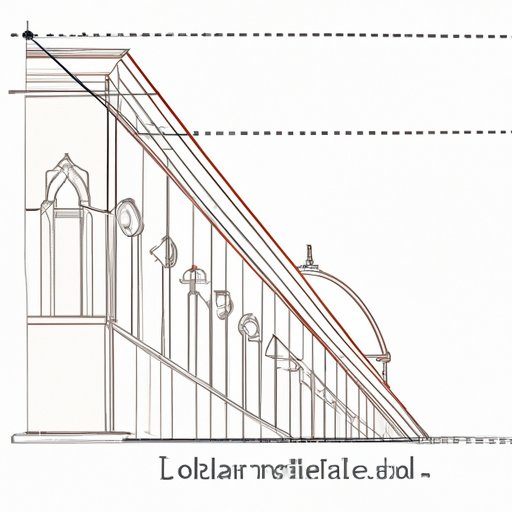Introduction
Linear perspective is an artistic technique used to create a realistic representation of three-dimensional objects and depth on a two-dimensional surface. This technique has been used by artists since the early Renaissance period and has become an essential tool for creating accurate and realistic representations of space. In this article, we will explore the history of the invention of linear perspective and examine its impact on art and architecture.

A Historical Overview of the Invention of Linear Perspective
The invention of linear perspective is often credited to Italian artist and architect Filippo Brunelleschi. He developed the concept of one-point perspective, which uses a single vanishing point to create the illusion of depth on a flat surface. This technique was first demonstrated in his painting of the Florence Baptistery in 1425. According to art historian Giorgio Vasari, Brunelleschi “invented a method of representing all visible things in a picture from one viewpoint, so that the parts at the front would be foreshortened, those at the back enlarged, and the sides and middle portions diminished in proportion.”
Renaissance artists such as Leonardo da Vinci, Michelangelo, and Raphael further developed the use of linear perspective, creating more complex compositions with multiple vanishing points and greater depths of field. Their works demonstrate how linear perspective can be used to create realistic depictions of space, allowing viewers to feel like they are standing within the depicted scene.
Leon Battista Alberti was another important figure in the development of linear perspective. He wrote the influential treatise On Painting in 1435, which outlined the mathematical principles behind linear perspective and explained how it could be used to create accurate representations of three-dimensional objects. His work laid the foundation for the widespread use of linear perspective in art and architecture.
Examining the Impact of Linear Perspective on Art and Architecture
The use of linear perspective has had a profound effect on art and architecture. It has allowed artists to create realistic depictions of space and depth, giving viewers the feeling of being immersed in the depicted scene. This technique has also enabled artists to accurately represent three-dimensional objects, as seen in the works of Renaissance masters such as Leonardo da Vinci and Michelangelo.
Linear perspective has also been instrumental in the development of modern architecture. Architects have used linear perspective to create buildings with a sense of depth, scale, and balance. This technique has also allowed them to accurately represent the proportions of their designs, creating structures that are both aesthetically pleasing and structurally sound.

The Role of Mathematics in the Creation of Linear Perspective
Mathematics plays an important role in the creation of linear perspective. By using mathematical formulas and equations, artists and architects are able to accurately calculate the size and position of objects in a two-dimensional space. This allows them to create realistic representations of three-dimensional objects, as seen in the works of Renaissance masters such as Leonardo da Vinci and Michelangelo.
The use of mathematics in the creation of linear perspective has also led to the development of new tools and techniques. For example, the camera obscura, an optical device used to project images onto a surface, was invented in the 16th century as a tool for studying linear perspective. This device has since been adapted for use in photography, film, and other visual media.
Conclusion
In conclusion, the invention of linear perspective has had a profound impact on art and architecture. This technique has allowed artists and architects to create realistic depictions of three-dimensional objects and space, as seen in the works of Renaissance masters such as Leonardo da Vinci and Michelangelo. The use of mathematics has also been instrumental in the development of linear perspective, allowing artists and architects to accurately calculate the size and position of objects in a two-dimensional space. The invention of linear perspective has revolutionized the way we view art and architecture and has helped shape the world we live in today.
(Note: Is this article not meeting your expectations? Do you have knowledge or insights to share? Unlock new opportunities and expand your reach by joining our authors team. Click Registration to join us and share your expertise with our readers.)
